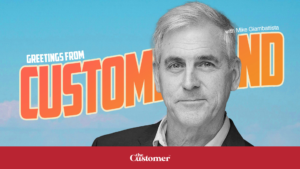Consumer behavior trends are constantly evolving. Going beyond surface-level insights can uncover hidden drivers shaping customer decision-making and identify emotional and rational factors that explain purchasing in powerful ways marketing teams can act on.
Take the pandemic’s impact on emotions like anxiety. By tracking ongoing societal mood shifts through neuroscience and psychological techniques, we identified the intensification of a “feel good fast” zeitgeist taking hold since 2018 – a yearning for instant gratification against the pressures of modern life. This desire now guides decision-making more than rational considerations – like price – for many brands.
I presented findings from our latest research in a webinar with Wall Street analyst Nik Modi, demonstrating new techniques to map changes in consumer psychology over time to real-world sales data.
Prefer to see the video? Watch the webinar here.
Let’s discuss the consumer behavior trends we discovered:
- Measuring the forces that govern consumer behavior trends
- Connecting emotional drivers with brand performance
- Adapting strategy as consumer behavior trends shift
- Insight into 2024 and beyond
These key lessons are helpful for brands seeking to diagnose and predict shopper behavior amid turbulent markets.
Measuring the Forces That Govern Consumer Behavior Trends
The omnichannel marketplace complicates grasping what drives purchases. Supply chain turmoil, economic uncertainty, geopolitics – also interfere with seeing what clear motivators are working behind the surface to sway customers. However, our studies reveal measurable “ambient forces” – macro trends that reliably shape consumer thinking without controlling every choice.
What’s an omnichannel marketplace? An omni channel marketplace means consumers have many options for shopping and brands can promote products/services across multiple channels to connect with customers on their preferred channel with relevant content and messaging.
Following how these unseen drivers change over time lets us pinpoint what predicts behavior as consumer priorities shift. But can measures of psychological indicators such as moods and emotions also forecast actual revenue outcomes?
Connecting Emotional Drivers with Brand Performance
To explore connections between perception and sales, we analyzed over 50 top beverage brands to uncover how shifts in consumer behavior trends link to brand performance. We identified where consumers believe each fit among emotional frames like “functional and practical” or “helps me feel good.” We then worked with the RBC team to overlay two years of performance data.
Brands aligned with relief-seeking impulses, (the emotional drive to seek out experiences that provide relief, comfort, or escape from life’s pressures), strongly outperformed those seen as more rational options in household penetration and volume growth from 2021-2023. As the “feel good fast” psyche grew more influential over time, so did purchase frequency for brands riding this wave.
For example, Monster energy drinks led in its perceived ability to satisfy instant enjoyment. Meanwhile, brands like Diet Pepsi lagged relative to this desire—the growth disparities between such brands mapped clearly to these psychological perceptions.
This analysis demonstrates the emotional zeitgeist directly impacting revenues, not just guiding brand sentiment. Tracking the red lines on evolving consumer behavior trends also lets us accurately forecast sales ahead of time, not just clarify past ones.
Learn more about the “why” behind drink choices.
Adapting Strategy as Consumer Behavior Trends Shift
Of course, decision drivers remain in flux, and the growth mindsets we uncover offer advantages only when accurately anticipated and catered to. Our data forecasts new forces emerging as an emotional driver in the years ahead while impulsiveness loses influence.
Brands need to watch big picture forces for signs of when these repeating shifts in consumer action happen and be ready to meet buyers in new ways. If “feel good fast” fades to a more exploratory focus, messaging and branding require change to lead the way and stay ahead of the curve.
We help clients see where consumer needs are headed, not just respond in the moment. Blending behavior studies with artificial intelligence and sales data offers new tools to uncover hidden shifts before they shake up profits.
Insight into 2024 and Beyond
Our team translates consumer psychology to illuminate sales forecasting and market analysis with “why” behind the numbers so that we can spot and prepare for sea changes in consumer behavior trends ahead.
I was originally doubtful that the initial pandemic panic and “revenge spending” trends meant permanent market change. Yet the growing evidence shows new mindsets taking hold, fueled by heavy pressures unlike past recessions. People don’t bounce back the same once impacted by the perception of persistent risks or future uncertainty.
Nevertheless, the constantly changing moods of buyers mean models demand regular improvement informed by behavioral science. Numbers and surveys only reveal part of the equation; psychological inputs answer the emotional problems to be solved.
At Alpha-Diver, our behavioral analytics capabilities form part of a broader integrated predictive suite we offer to empower brands. This encompassing approach equips organizations to set aligned objectives, craft data-driven strategies, and course-correct in alignment with shifting consumer behavior trends. By compiling and assessing data gathered over time, we’re only starting to tap into how insights can foretell real results.





